Download Our Educational One-Sheets
Learn From Our Vector Control Experts! 🦟
Part of our promise is to educate the public and provide them with the resources they need to run effective vector management programs. Click on the links below to view, download, and share our educational one-sheets.

Why Partner With VDCI?
Vector Disease Control International (VDCI) offers leading mosquito management solutions to government partners, emphasizing Integrated Mosquito Management (IMM), advanced technology, and public education. See what separates us from the competition and learn how we can help you create safer, more enjoyable outdoor spaces.
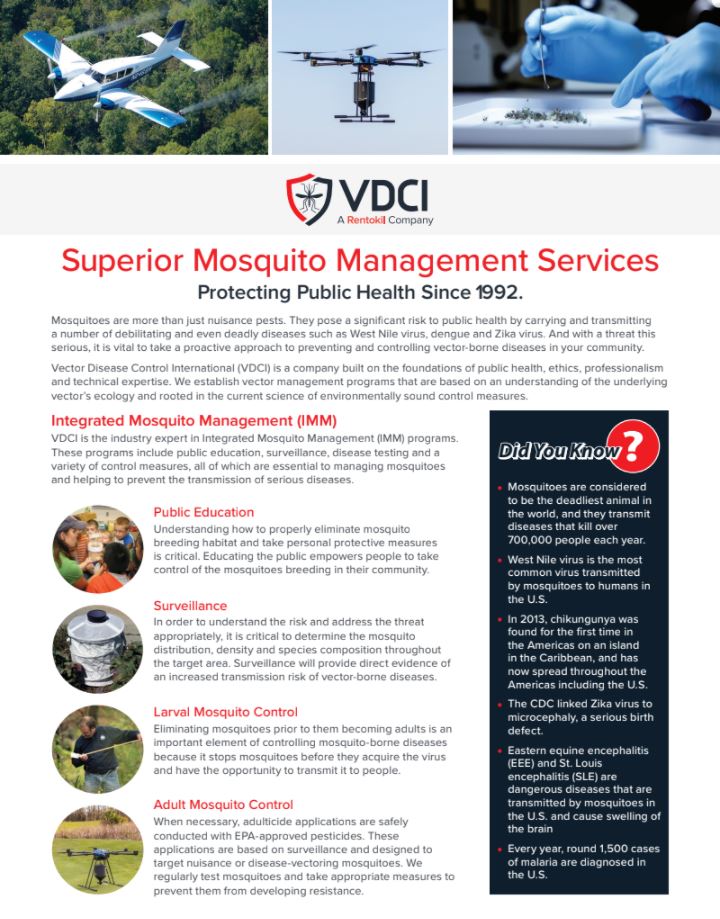
Integrated Mosquito Management
VDCI is the industry expert in Integrated Mosquito Management (IMM) programs. These programs include public education, surveillance, disease testing and a variety of control measures, all of which are essential to managing mosquitoes and helping to prevent the transmission of serious diseases.
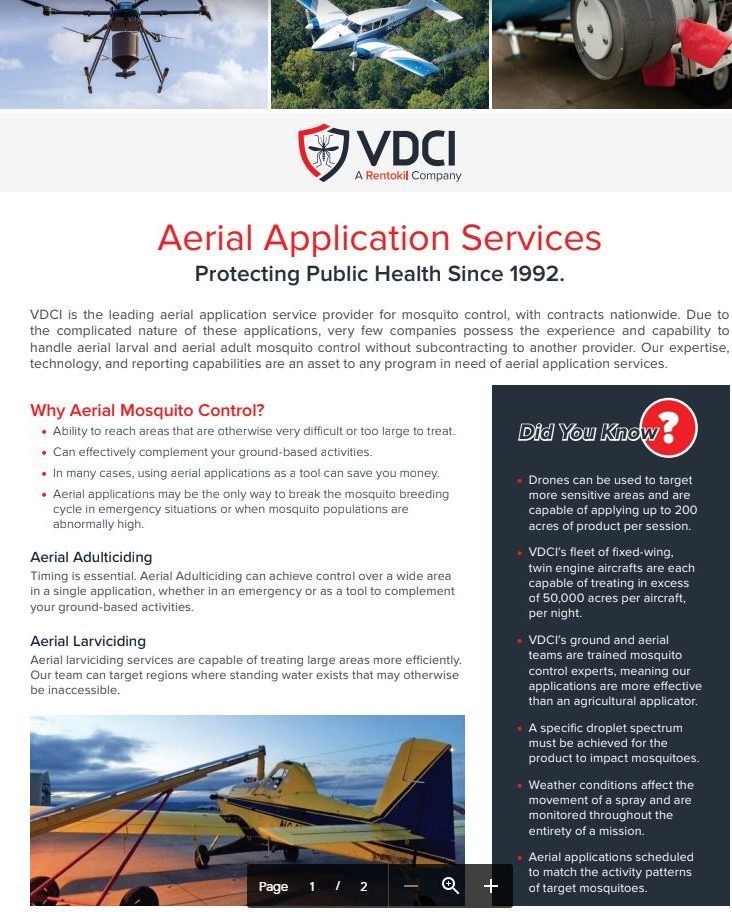
Aerial Application Services
Aerial Adulticiding can achieve control over a wide area in a single application, whether in an emergency or as a tool to complement your ground-based activities. Aerial larviciding services are capable of treating large areas more efficiently. Our team can target regions where standing water exists that may otherwise be inaccessible.
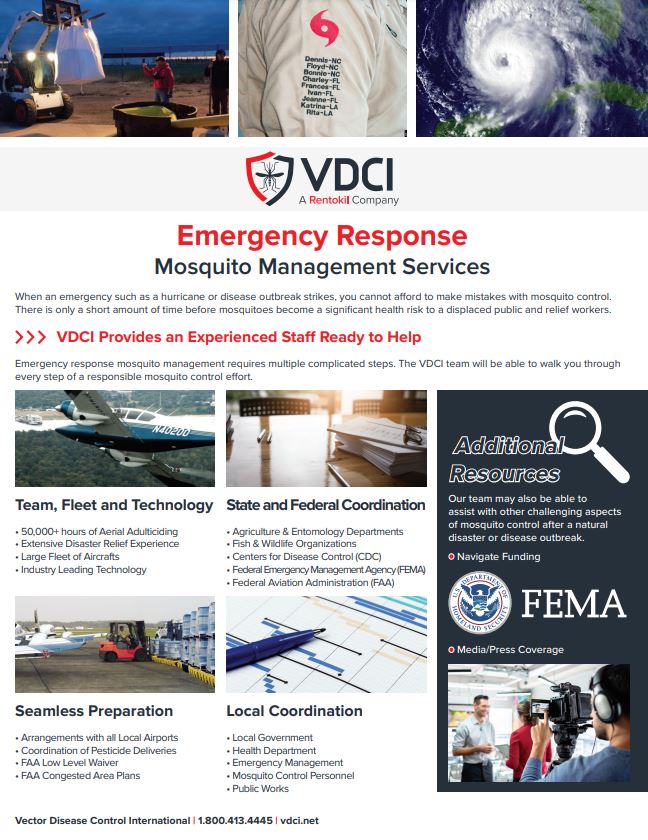
Emergency Response
When an emergency such as a hurricane or disease outbreak strikes, you cannot afford to make mistakes with mosquito control. There is only a short amount of time before mosquitoes become a significant health risk to a displaced public and relief workers. Emergency response mosquito management requires multiple complicated steps. The VDCI team will be able to walk you through every step of a responsible mosquito control effort.

Advanced Drone Technology
Drone technology is a dynamic addition to our existing fleet of twin-engine aircraft and GPS-monitoring systems, capable of rapidly treating vast areas as a natural disaster response tool or as regional needs arise. Aerial equipment plays an integral role in an IMM program built on proactive strategies, advanced technologies, and public education. Our integrated system ensures the maximum spray cloud droplet density is delivered.
Mosquito-Borne Disease Info Sheets
Keep yourself and stakeholders informed on mosquito-borne diseases that most affect United States populations.
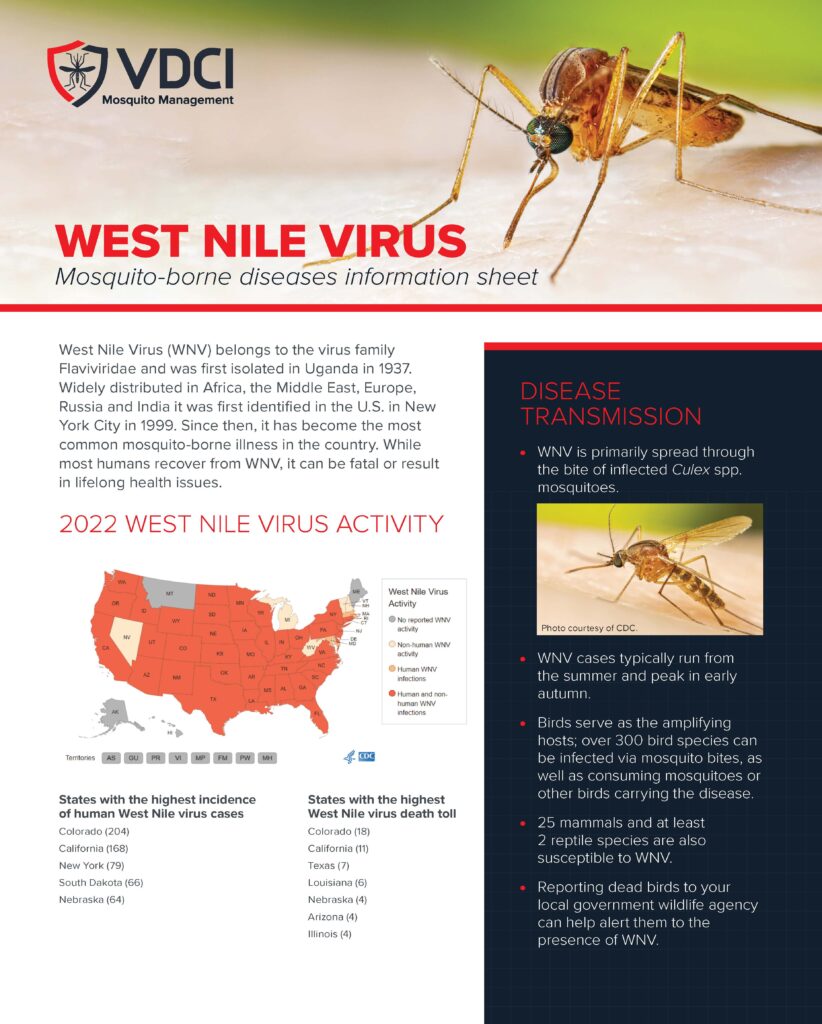
West Nile Virus
West Nile Virus (WNV) is a mosquito-borne illness that was first identified in New York City in 1999. Although widely distributed in many parts of the world, it has become the most common mosquito-borne illness in the United States. While most people recover, it can be fatal or lead to lifelong health problems. Download our educational one-sheet for a concise overview of WNV and its impact.
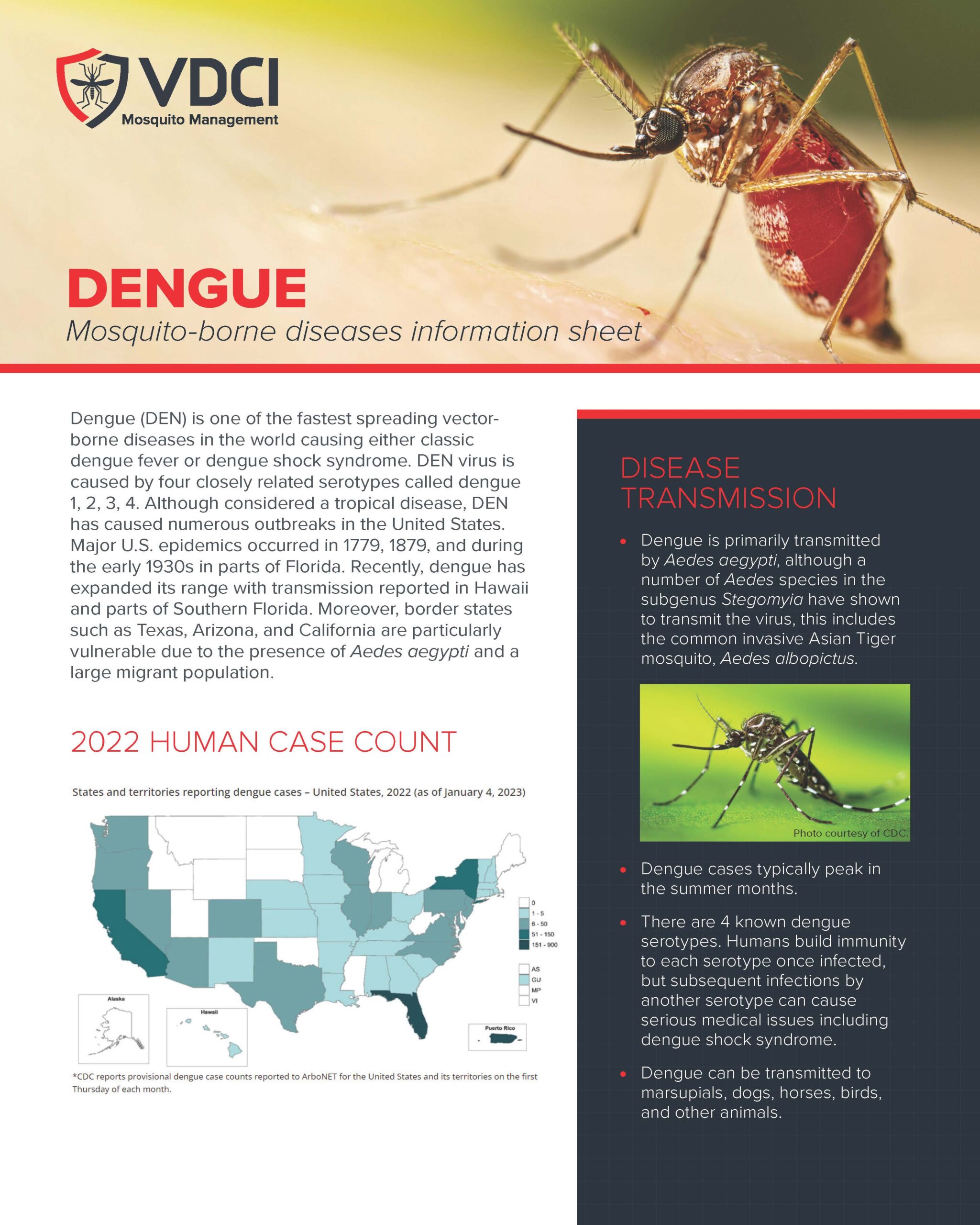
Dengue Virus
Dengue, a vector-borne disease with four serotypes, causes classic fever or dengue shock syndrome, and has caused outbreaks globally. It has also affected the United States, including Hawaii and Southern Florida, with Aedes aegypti and migrant populations in Texas, Arizona, and California increasing vulnerability. Control and prevention measures are crucial to reduce transmission.
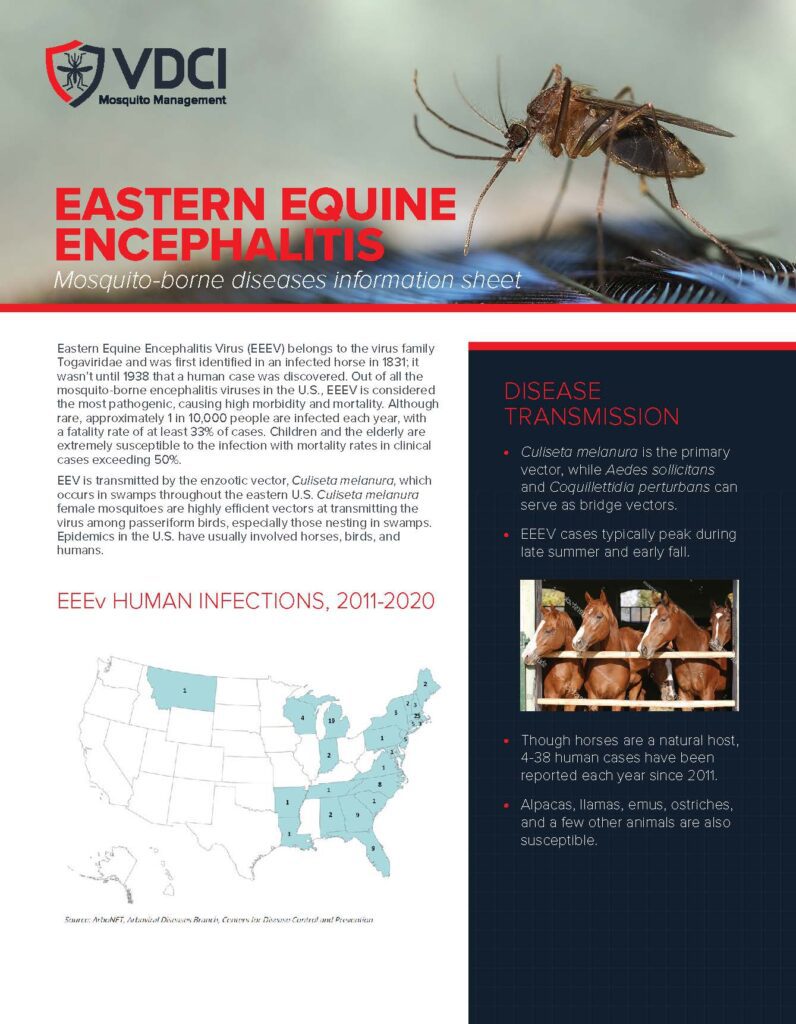
Eastern Equine Encephalitis
Eastern Equine Encephalitis Virus (EEEV) is a highly pathogenic mosquito-borne virus that causes high morbidity and mortality in humans, with a fatality rate of at least 33% of cases. Although rare, approximately 1 in 10,000 people are infected each year, and the elderly are especially susceptible. EEEV is primarily transmitted by Culiseta melanura mosquitoes, which occur in swamps throughout the eastern U.S.
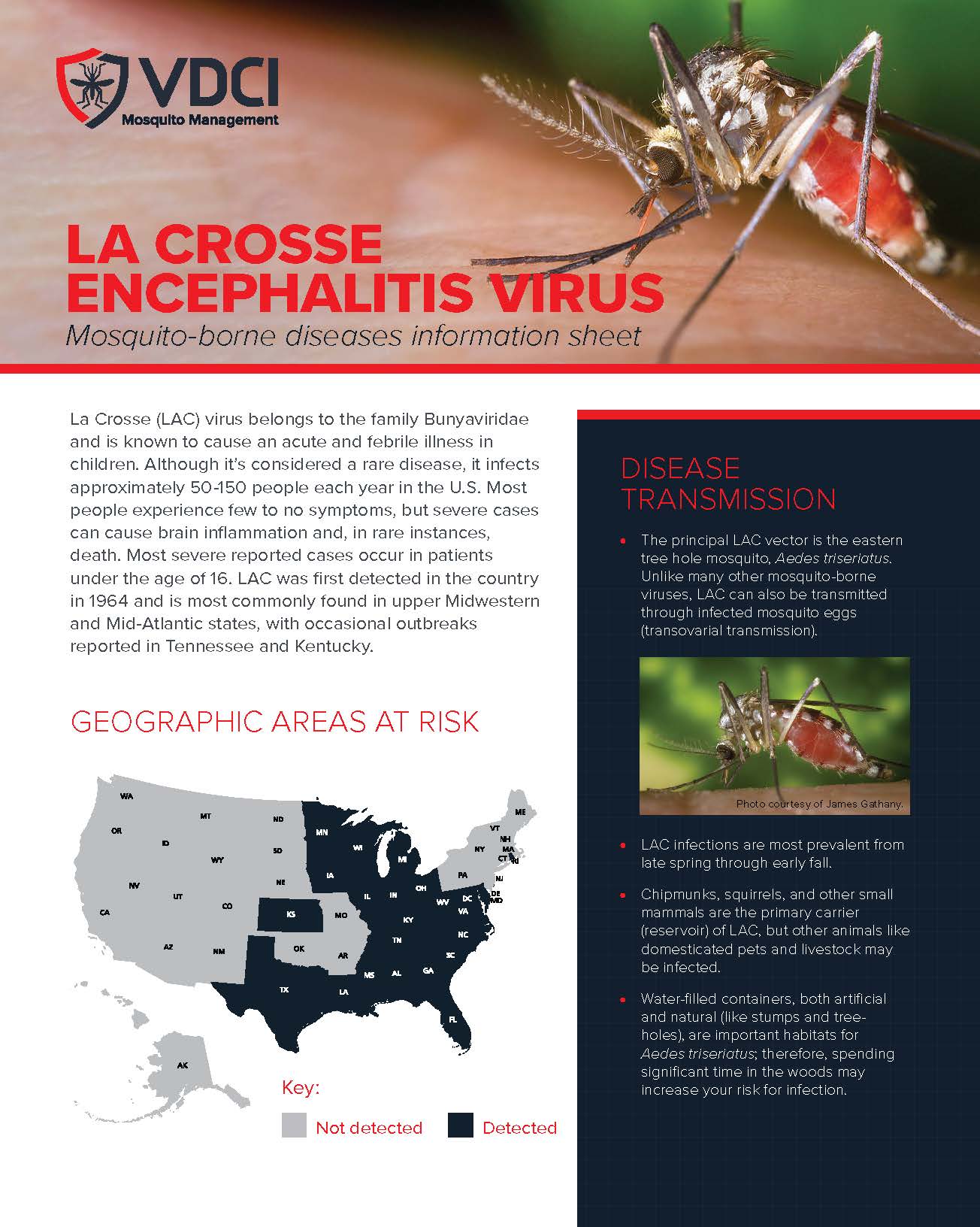
La Crosse Encephalitis
La Crosse (LAC) virus is a rare but potentially serious disease that primarily affects children. Although most people experience few or no symptoms, severe cases can cause brain inflammation and, in rare instances, death. LAC was first detected in the United States in 1964 and is most commonly found in upper Midwestern and Mid-Atlantic states, with occasional outbreaks reported in Tennessee and Kentucky.

